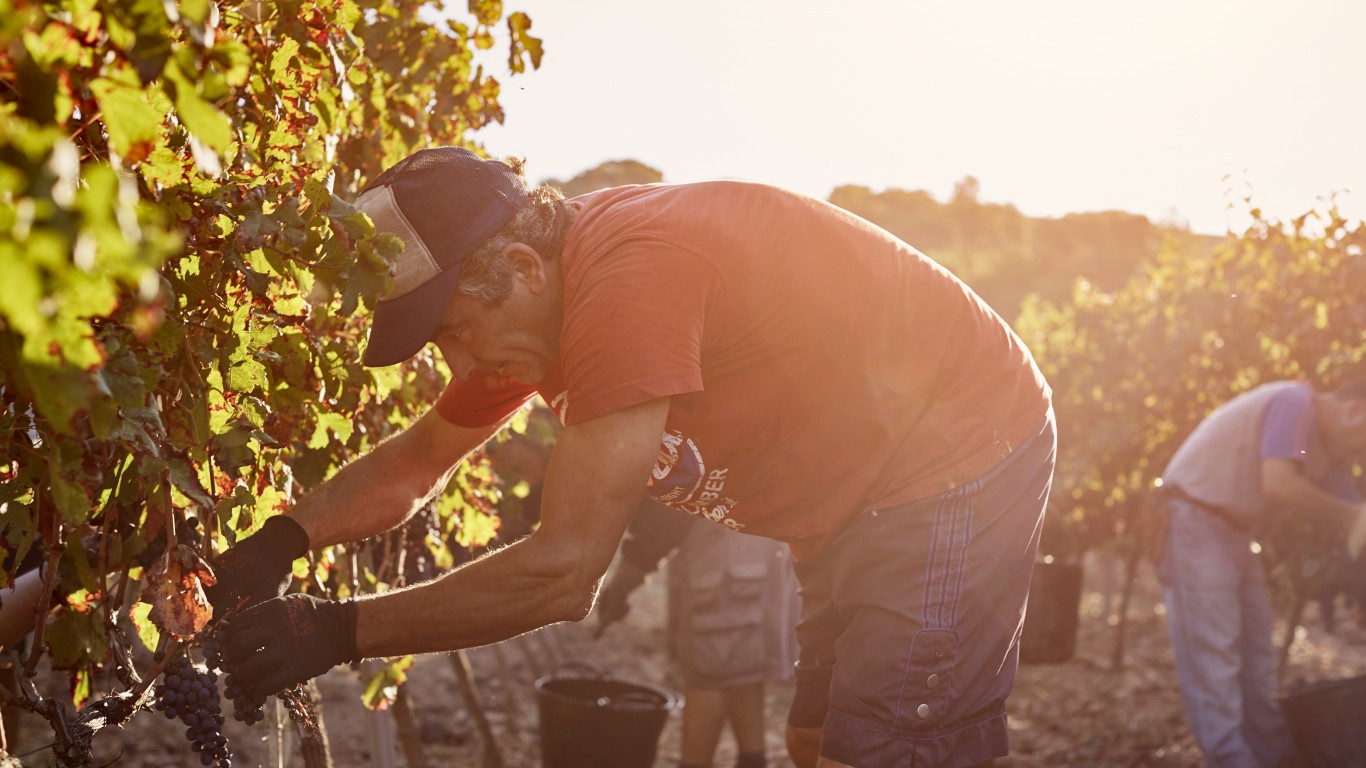Scientists estimate that July 4th this year was the hottest day on earth since global temperatures were first recorded around 1880, and possibly the hottest in the past 125,000 years. “Looking to the future, we can expect global warming to continue and hence temperature records to be broken increasingly frequently, unless we rapidly act to reduce greenhouse gas emissions to net zero,” Paulo Ceppi, a climate scientist at London’s Grantham Institute, told the Washington Post.
Soaring temperatures are only one result of climate change. Others include rising sea levels and flooding, drought and also devastatingly heavy rainfall, more (and more violent) typhoons and hurricanes, increased threat of wildfires, salinization of freshwater, and proliferation of pests and diseases.
Despite overwhelming evidence to the contrary, the world is full of climate change deniers, including prominent American politicians (many with ties to the fossil fuel industry) like Marco Rubio, Mitch McConnell, and Ted Cruz – and of course Donald Trump, who once tweeted that “The concept of global warming was created by and for the Chinese in order to make U.S. manufacturing non-competitive.”
Whatever politicians and other skeptics might maintain, however, it’s probably safe to say that nobody in the agricultural sector – whether the owner of a small family farm or the CEO of an agribusiness giant – is unaware of the very real effects of climatological disruption on their livelihood.
To compile a list of 20 crops or food products that are particularly susceptible to the negative effects of climate change, 24/7 Tempo reviewed articles on a variety of online publications, including Food Politics and Civil Eats, as well as the websites of the U.S. Environmental Protection Agency, National Centers for Environmental Prediction, and Food and Drug Administration.
The list is by no means exhaustive: Virtually anything that grows or is raised anywhere in the world is likely to feel some impact from increasing or unpredictable heat, cold, drought, rainfall, high winds, and other climatic conditions. No major crop has yet disappeared entirely due to these factors, but their quantity and quality is already being affected.
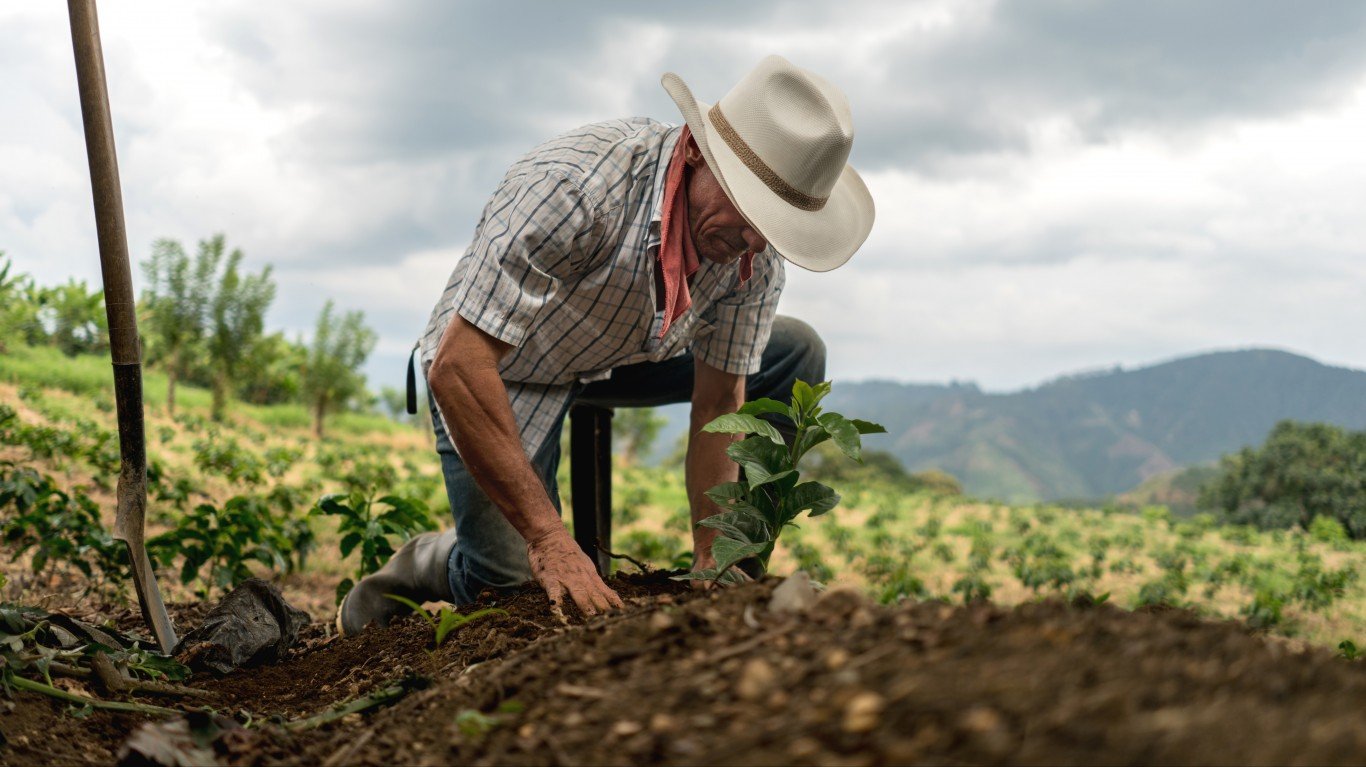
Coffee
> Largest U.S. producer: Hawaii
> Largest international producer: Brazil
Changes in climate patterns could reduce suitable coffee-growing regions and lead to decreased coffee production, and changes in temperature can affect the altitudes at which coffee can be grown, potentially forcing farmers to move their plantations. Higher temperatures also favor the proliferation of pests, such as coffee berry borer and leaf rust. In June, the USDA reported that world coffee production had decreased by 2.7 million bags (each one typically weighing between 130 and 155 pounds) from the December 2022 estimate, with Colombia alone producing 1.3 million bags fewer than expected due to excessive rain and cloud cover. Changes in temperature, humidity, and precipitation patterns can also affect the maturation process of coffee cherries, altering the sugar development, acidity, and overall flavor profiles of the beans and introducing variations in the taste and quality of coffee.
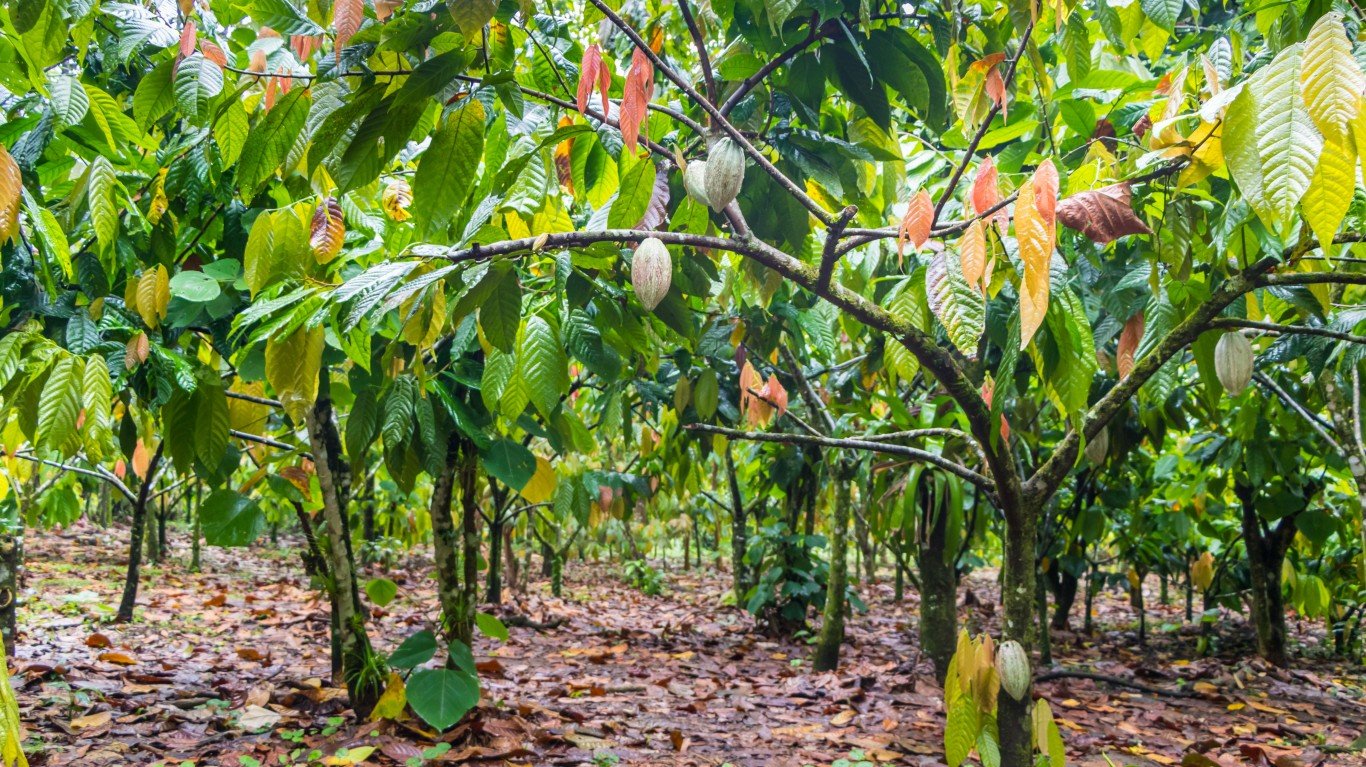
Cacao
> Largest U.S. producer: N/A
> Largest international producer: Côte d’Ivoire
Cacao trees have specific temperature and rainfall requirements for optimal growth and fruit development. Rising temperatures and changes in rainfall patterns could make many regions unsuitable for cocoa cultivation and can favor the proliferation of pests such as cocoa mirids and fungal diseases like black pod disease. A study in Côte d’Ivoire reported that the incidence of black pod disease has increased by 50% in recent years, while a study in Ghana found that an increase of only 1ºC (1.8ºF) in temperature could reduce cacao yields by up to 10%.
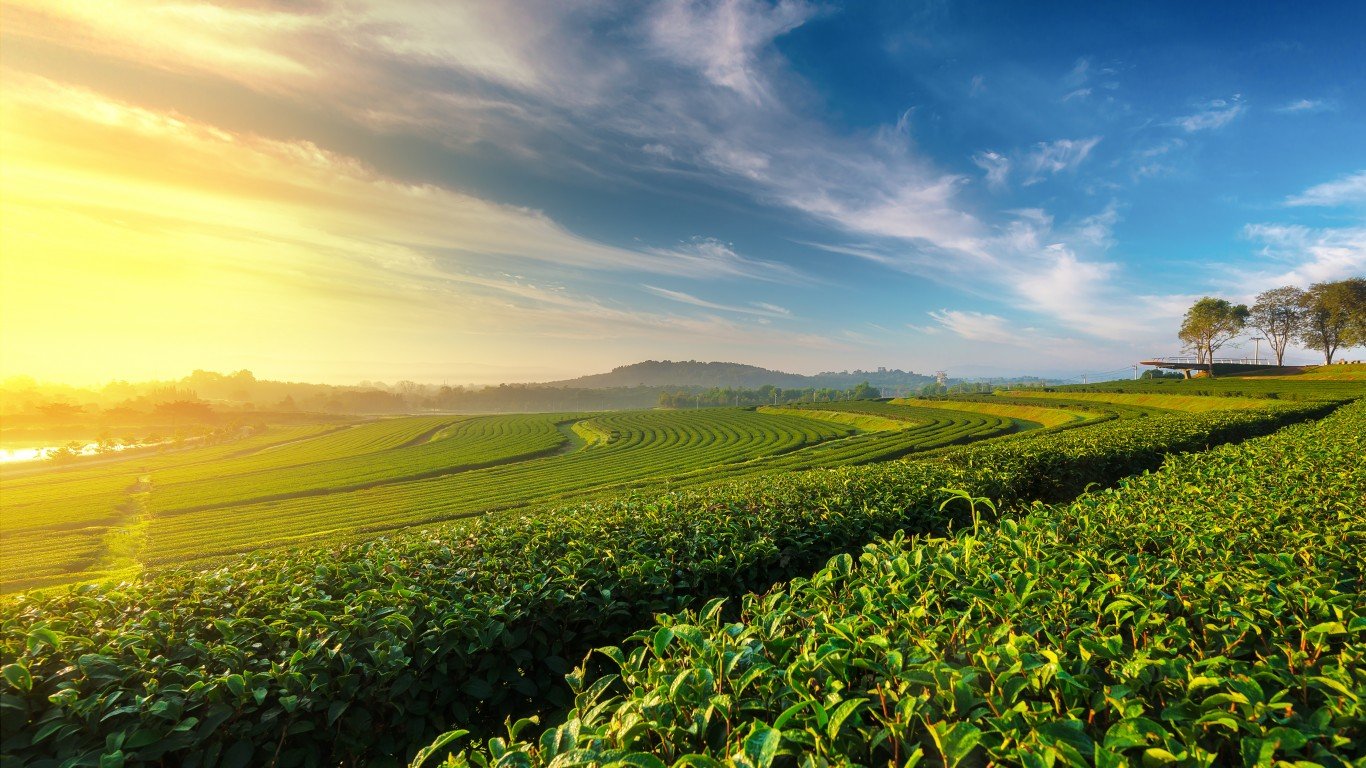
Tea
> Largest U.S. producer: South Carolina
> Largest international producer: China
Tea plants thrive within specific temperature ranges, typically between 13°C and 30°C (55°F and 86°F). Higher temperatures can accelerate the growth cycle, leading to premature budding and reduced leaf quality. Additionally, extreme heat waves can cause heat stress and damage the plants. Tea plants require a specific amount of water for growth, and changes in precipitation can negatively impact their development, with insufficient rainfall leading to drought stress and reduced leaf production, while excessive rainfall can increase the risk of diseases and pests.
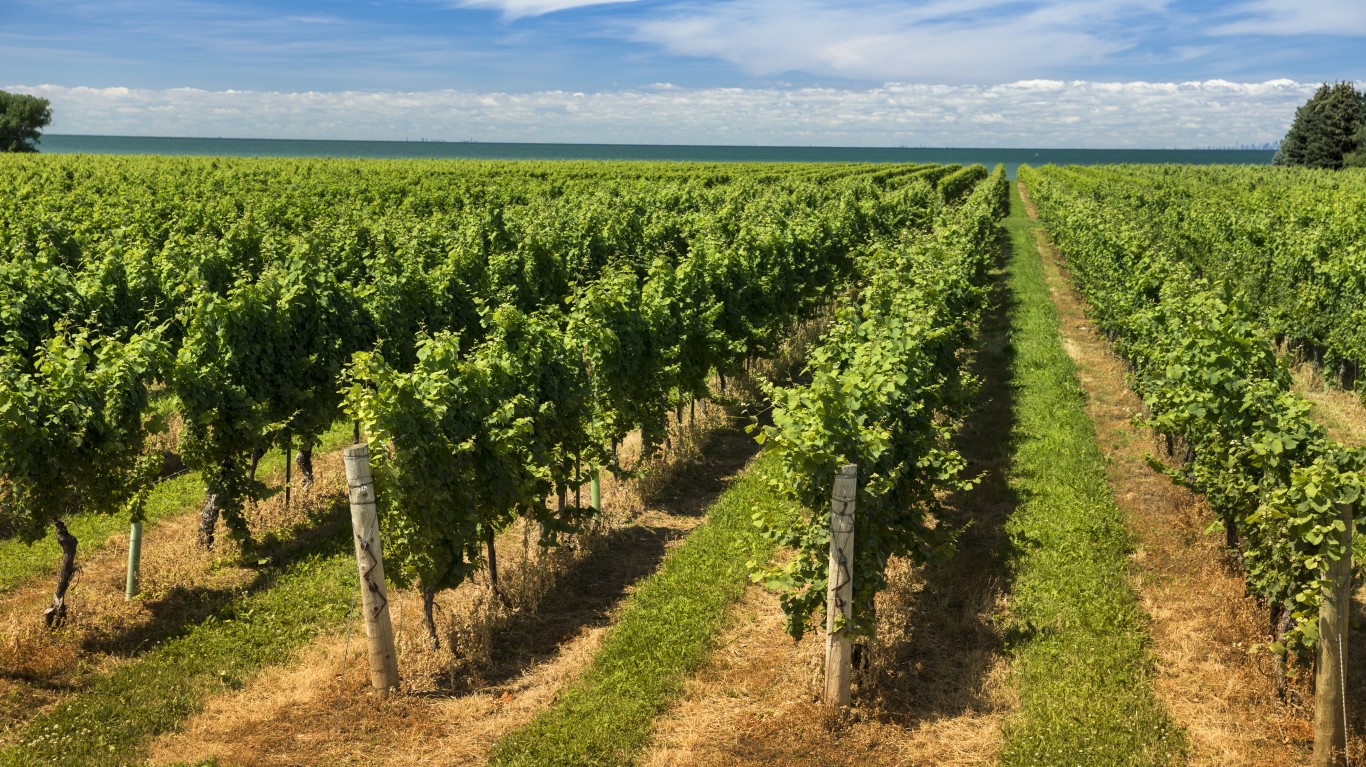
Grapes
> Largest U.S. producer: California
> Largest international producer: China
Extreme heat events can cause heat stress and damage to grapevines, affecting their growth, fruit set, and overall health. Heatwaves during the ripening period can accelerate grape maturation, potentially leading to unbalanced sugar and acidity levels, negatively impacting the flavor profile and quality of the grapes. Climate also influences the chemical composition of grapes, including sugar levels, acidity, and phenolic compounds. Changes in temperature and rainfall patterns can alter these chemical components, potentially affecting the flavor, aroma, and structure of wines produced from the affected grapes. A secondary result of climate change on grapes comes from wildfires facilitated by drought, which taint the grapes with smoke, making the wines they yield unpalatable.

Oranges
> Largest U.S. producer: Florida
> Largest international producer: Brazil
Extreme heat events can cause heat stress in orange trees, leading to reduced fruit set, smaller fruit size, and lower yields. Prolonged heat waves can also affect the flavor and quality of the oranges. Warmer temperatures and altered rainfall patterns also favor the proliferation of certain pests, such as citrus psyllids and mites, leading to increased infestations and damage to trees and fruit, and changes in humidity and temperature can impact the occurrence and severity of fungal diseases, including citrus greening and citrus canker.

Almonds
> Largest U.S. producer: California
> Largest international producer: U.S.A.
Almond trees require a specific combination of temperature and chill hours during the winter for proper flowering. Changes in climate could disrupt this balance, affecting production. Almond trees rely on honeybee pollination for successful fruit set, and climate change may affect the availability and behavior of bees, potentially impacting pollination rates. Almond trees also require a reliable water supply, particularly during critical growth stages. Climate change can lead to changes in rainfall patterns, increased evapotranspiration rates, and the risk of drought. Insufficient water availability can result in water stress and reduced tree growth, nut size, and yields.
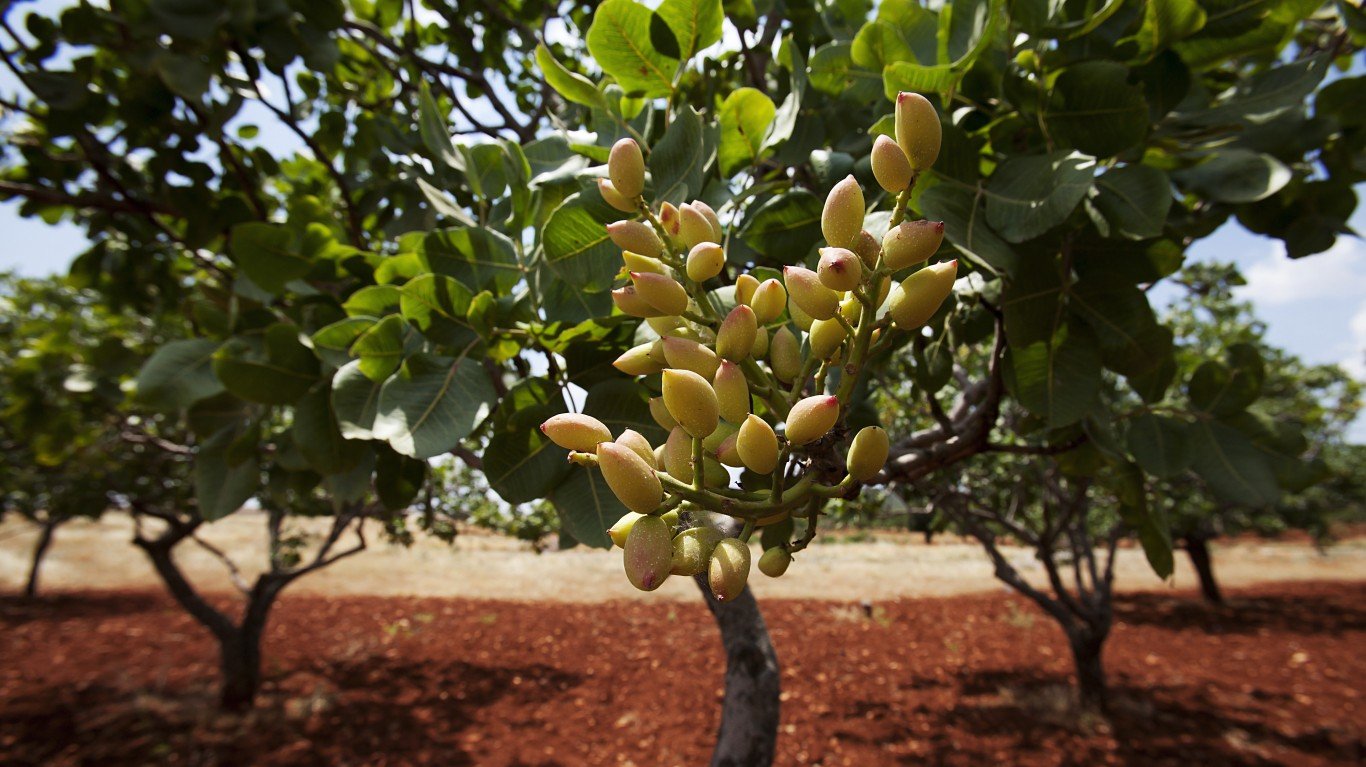
Pistachios
> Largest U.S. producer: California
> Largest international producer: U.S.A.
Pistachio trees thrive in arid regions but require specific chilling hours during the winter for proper flowering and fruit development. Higher temperatures can affect pollen viability, leading to reduced pollination and lower yields. Though the trees are adapted to arid and semi-arid environments, they still require a reliable water supply for optimal growth. Climate change can lead to changes in rainfall patterns, increasing the risk of drought and water stress for pistachio orchards. Warmer temperatures can favor the proliferation of certain pests, such as mites.
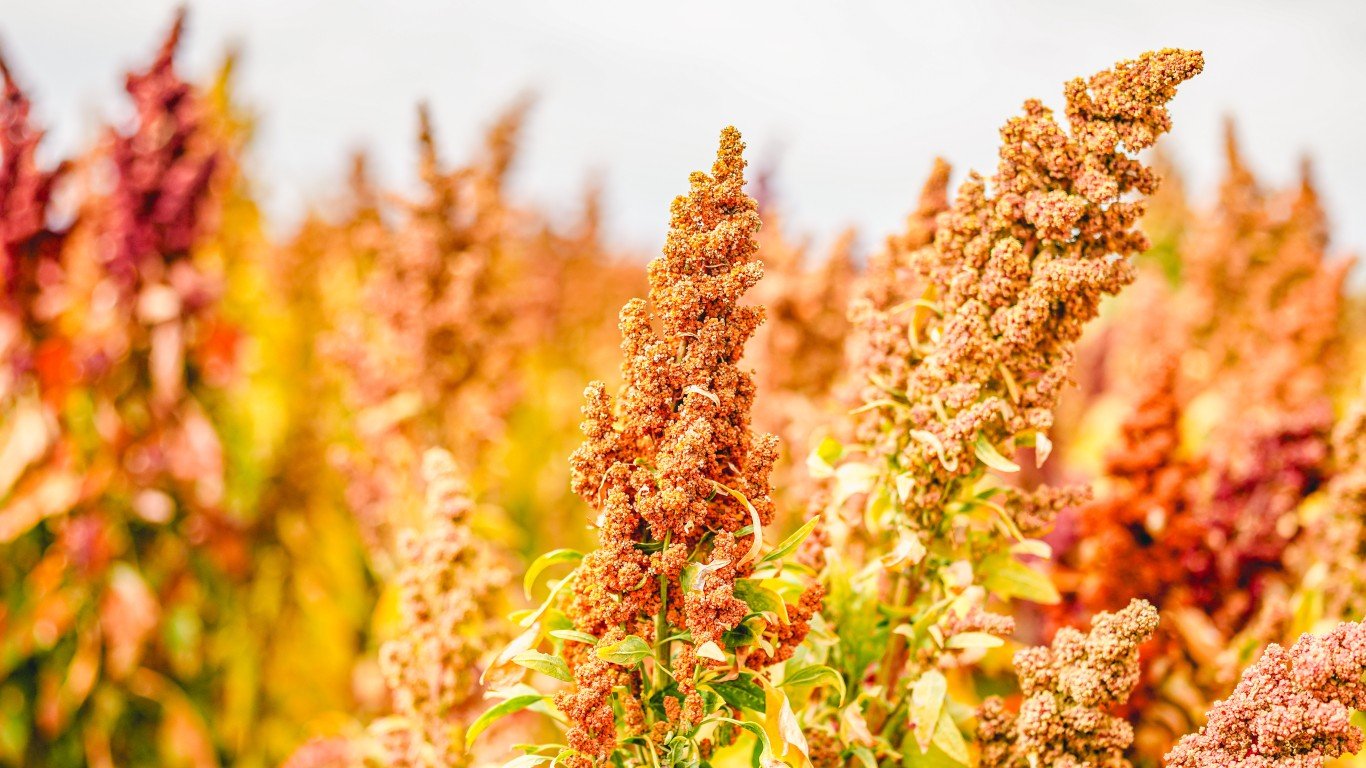
Quinoa
> Largest U.S. producer: Colorado
> Largest international producer: Bolivia
Interestingly, climate change can have both positive and negative implications for quinoa production. Quinoa is naturally adapted to arid and semi-arid conditions, making it relatively resilient to drought compared to other crops. As climate change leads to increased water scarcity and more frequent droughts in certain regions, quinoa’s drought tolerance can be advantageous, allowing it to continue thriving in areas where other crops may struggle. Some traditional quinoa-growing areas may become less suitable due to changes in temperature and rainfall patterns, however, even as new regions with more favorable conditions may emerge. This can create opportunities for expanding quinoa cultivation, but it may also disrupt established farming communities and local economies.
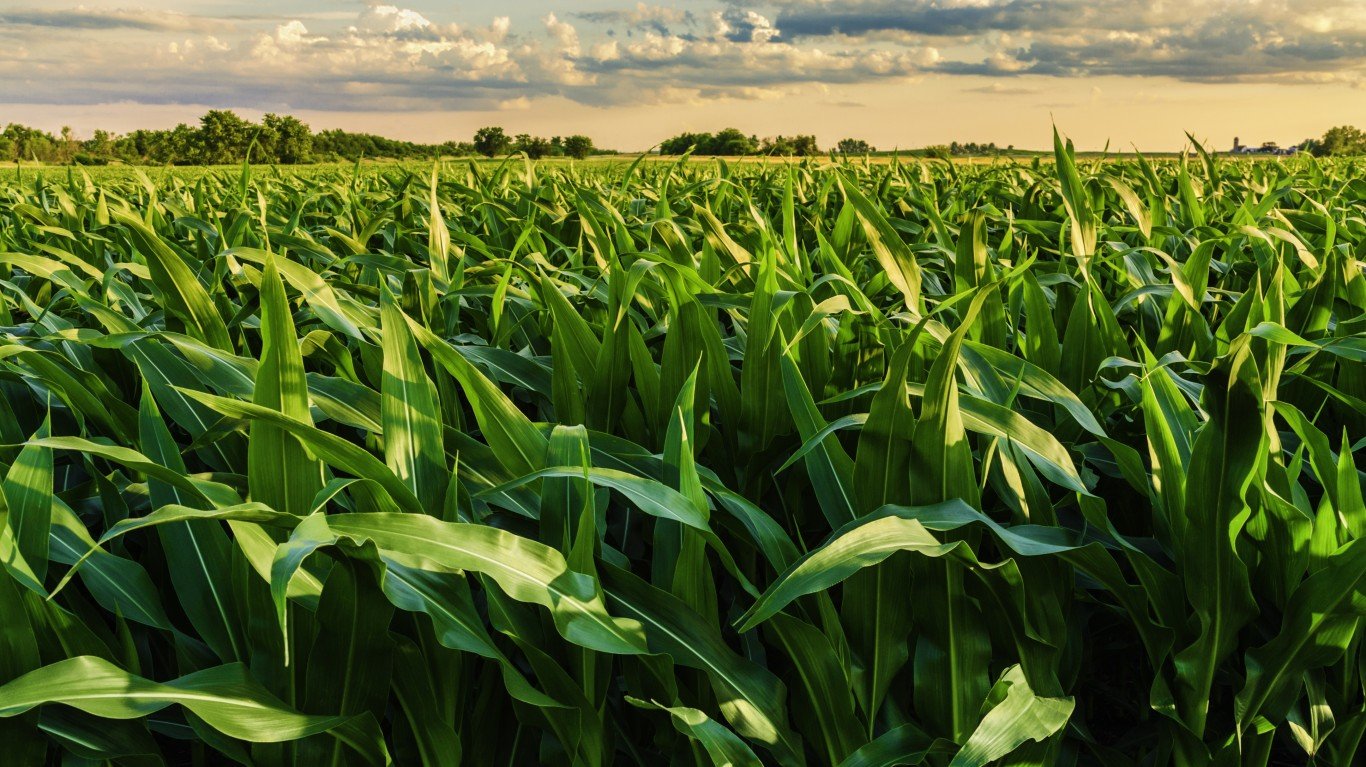
Rice
> Largest U.S. producer: California
> Largest international producer: China
Corn
> Largest U.S. producer: Iowa
> Largest international producer: U.S.A.
Higher temperatures can shorten the duration of the rice-growing season, impacting grain filling and yield. Extreme heat events can lead to heat stress, reduce pollen viability, and result in poor grain quality and yield losses. Droughts can reduce rice yields, while excessive rainfall can lead to flooding, submerging the rice plants and causing damage or even complete loss of the crop.
Rice cultivation in coastal areas is also vulnerable to rising sea levels and saltwater intrusion – which can reduce yields, stunt growth, and in severe cases, render the land unsuitable for rice production.
Extreme heat events during critical growth stages, such as flowering and grain filling, can cause heat stress, negatively affecting pollination and grain development. Insufficient water availability can result in lower yields, smaller ears, and poor grain quality. Elevated levels of atmospheric CO2 can stimulate photosynthesis and enhance plant growth – the so-called CO2 fertilization effect – but some studies suggest that elevated CO2 can increase susceptibility to certain pests and diseases, such as corn borers and fungal pathogens. Under drought conditions, the positive impact of elevated CO2 on corn yield may diminish or be nullified, and while higher CO2 can enhance nitrogen-use efficiency in corn, it can also lead to imbalances in other nutrients, such as phosphorus, potassium, and micronutrients.
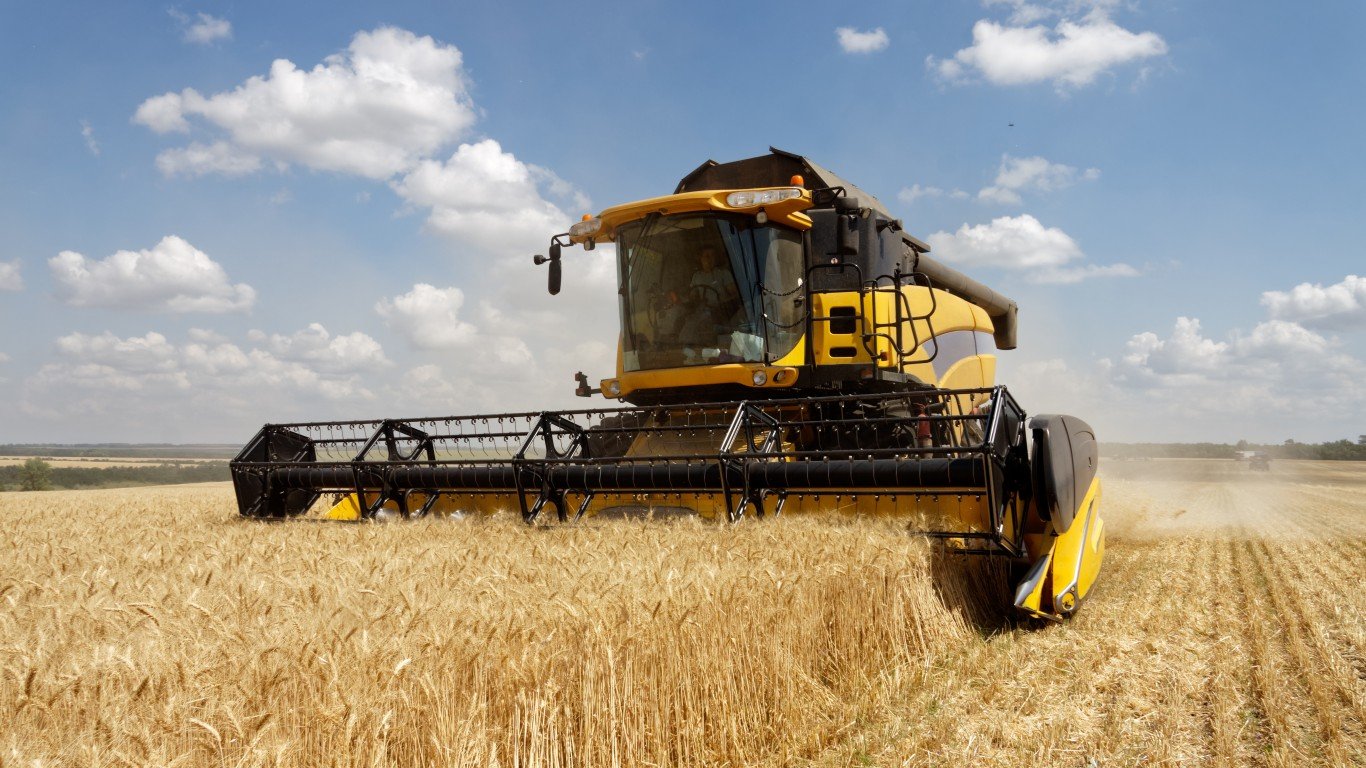
Wheat
> Largest U.S. producer: Wisconsin
> Largest international producer: China
Changes in temperature, water availability, and the prevalence of pests and diseases can affect wheat production, leading to potential food shortages and price increases. Excessive rainfall can cause waterlogging, soil erosion, and increased risk of fungal diseases in wheat crops. On the other hand, decreased rainfall can result in water stress and reduced crop productivity. Warmer temperatures can advance crop phenology, causing shifts in the growing season and potentially affecting crop management practices and the availability of suitable varieties for specific regions.
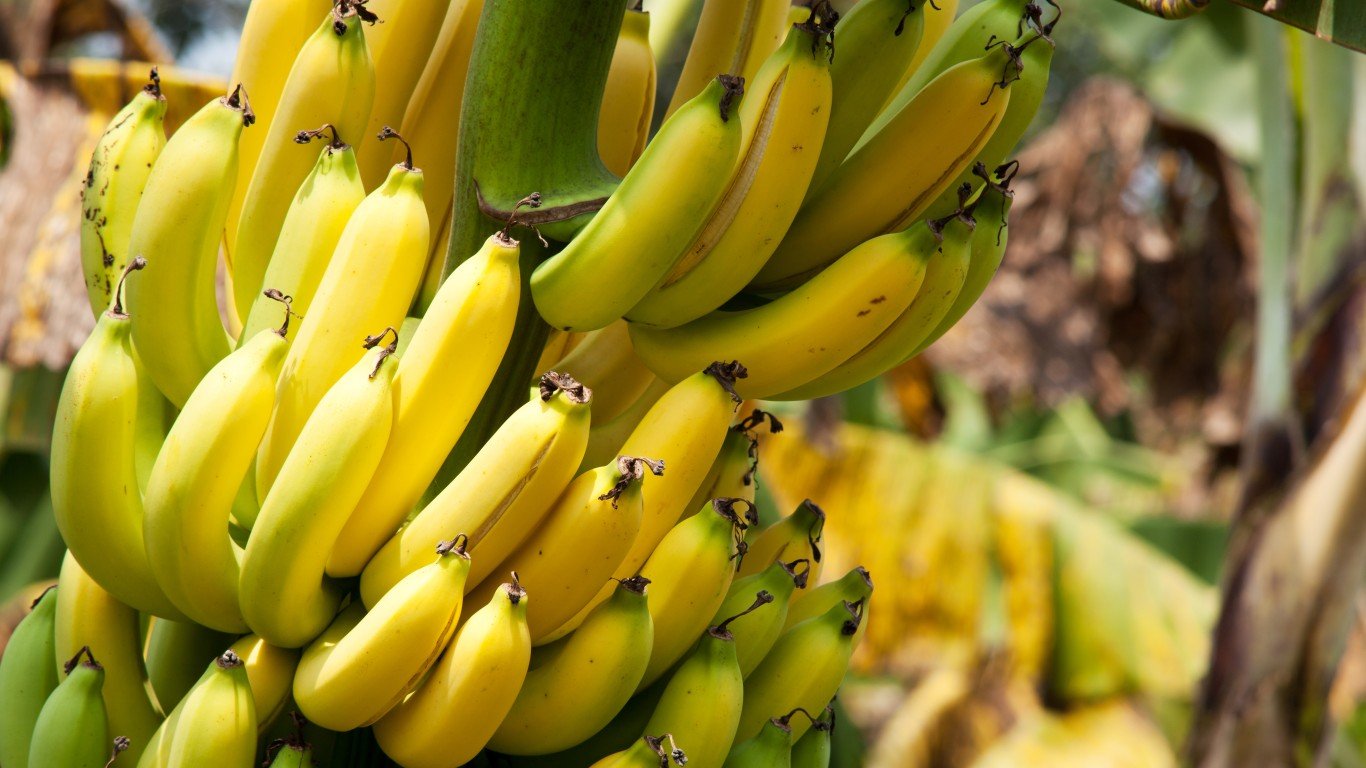
Bananas
> Largest U.S. producer: Hawaii
> Largest international producer: India
Bananas are highly susceptible to changes in temperature and rainfall. Rainfall patterns associated with climate change can lead to increased drought risk in some banana-growing regions and insufficient water availability can result in reduced fruit yield, smaller fruit size, and increased vulnerability to pests and diseases. Extreme weather events, such as hurricanes, tropical storms, and monsoon-level rainfall can damage banana plants, cause soil erosion, and lead to losses in crop yield. Flooding can also disrupt the root system of banana plants and increase the risk of disease incidence. Another problem is that the global banana industry is heavily dependent on a few susceptible cultivars, primarily the Cavendish variety, and the lack of genetic diversity means that there is limited variability for resistance to pests, diseases, and environmental stresses.
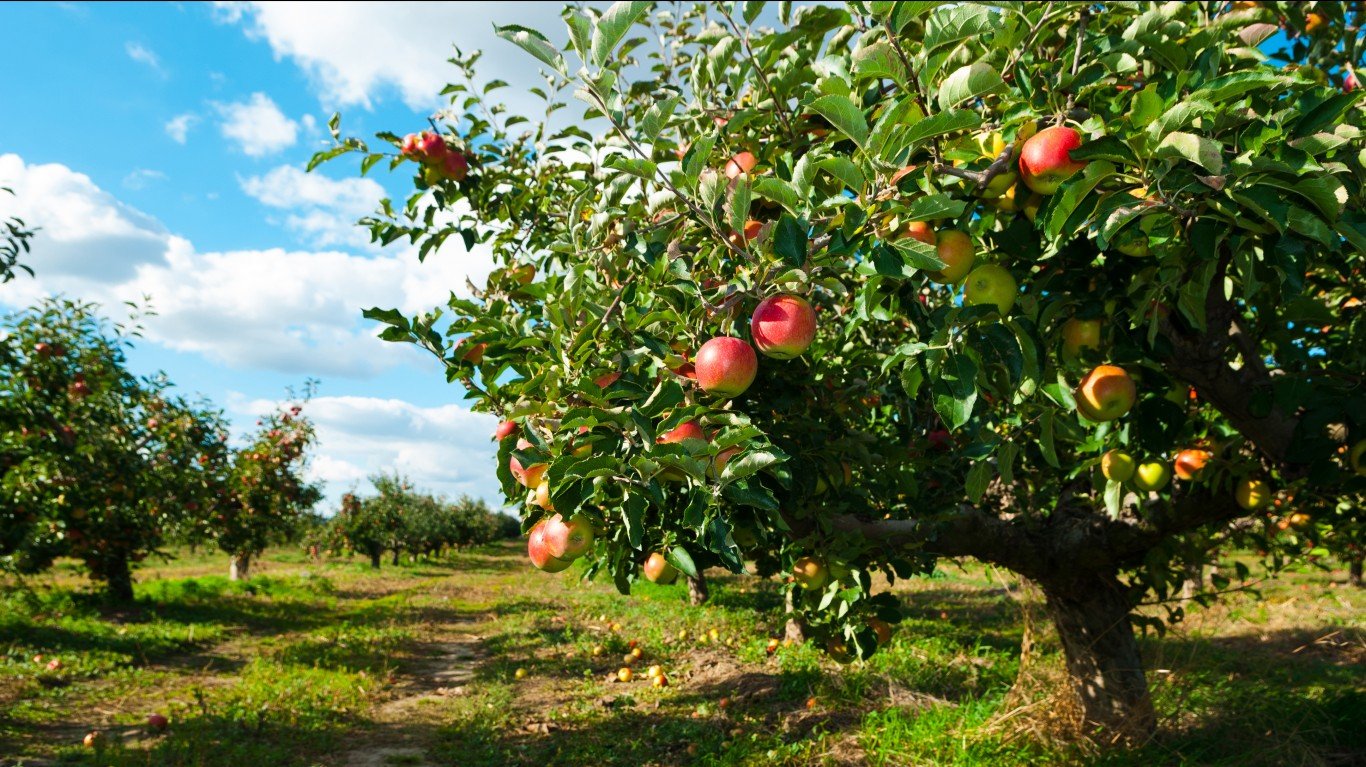
Apples
> Largest U.S. producer: Washington
> Largest international producer: China
Apple trees have specific temperature requirements, particularly for the accumulation of chilling hours during winter dormancy. Changes in temperature patterns can impact the fulfillment of chilling hour requirements, potentially affecting bud break, flowering, and fruit set. Alterations in temperature patterns, such as milder winters or inconsistent chill hours, can affect apple production, rendering some traditional apple-growing regions unsuitable, while other areas previously considered marginal may become more favorable. This can lead to geographic changes in apple production, impacting established apple-growing regions and potentially affecting the apple industry and economies.
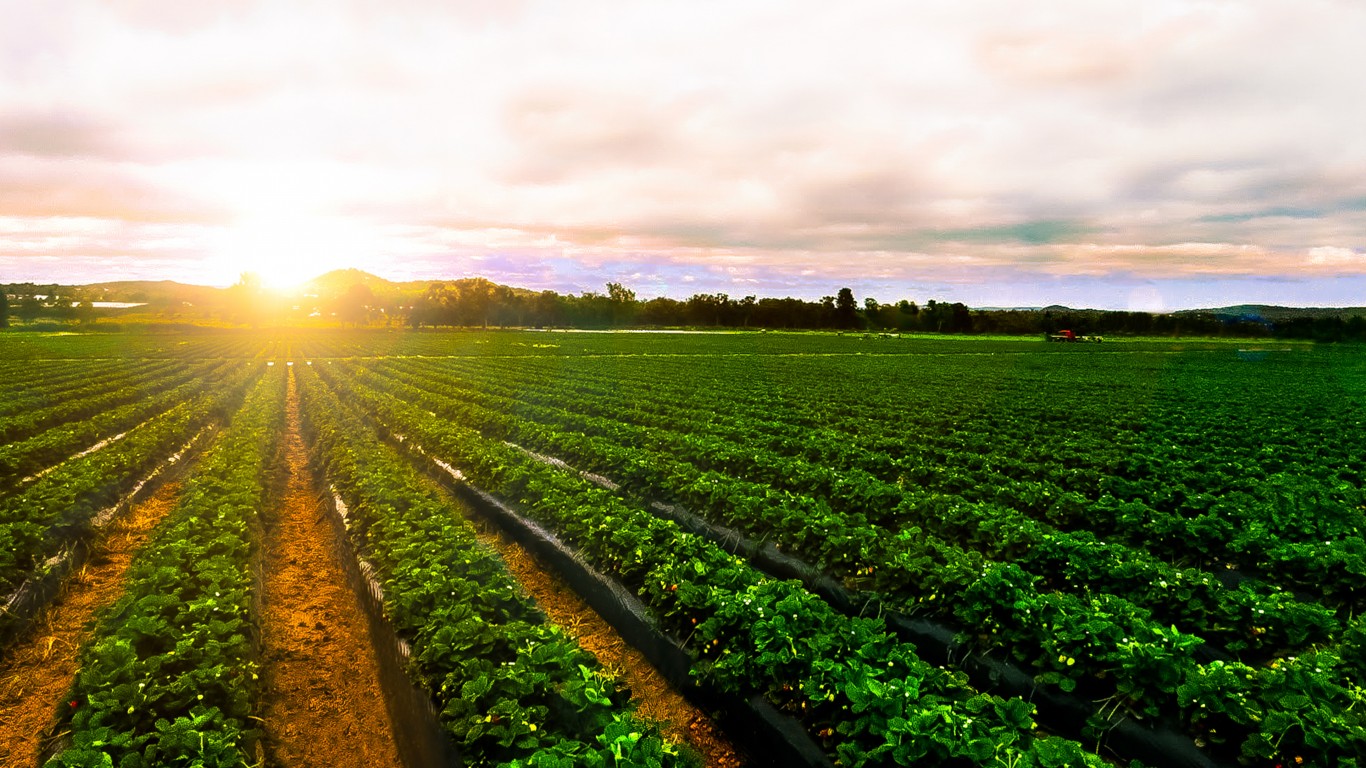
Strawberries
> Largest U.S. producer: California
> Largest international producer: China
Changes in temperature patterns associated with climate change can have significant effects on the growth and development of strawberries. High temperatures can reduce pollen viability, impacting pollination and fruit set. Heatwaves during flowering or fruiting stages can cause stress, leading to reduced yields and poorer fruit quality. Warmer temperatures can favor the proliferation of certain pests, such as spider mites and aphids, leading to increased infestations and damage to the plants and fruit, while changes in rainfall patterns can impact the prevalence and severity of fungal diseases.

Honey
> Largest U.S. producer: North Dakota
> Largest international producer: China
Climate change has both direct and indirect impacts on honey production and the overall health of honeybee populations. Changes in temperature and precipitation patterns can disrupt the synchrony between the blooming of nectar-producing plants and the foraging activities of honeybees. Droughts, heatwaves, and changes in land use can reduce the availability of flowering plants, affecting the quantity and diversity of nectar and pollen sources for honeybees, while events such as storms, floods, and heatwaves may damage honeybee colonies Bees may also exhibit changes in foraging patterns, nesting behavior, and overall productivity in response to altered climatic conditions. In addition, warmer temperatures can favor the proliferation of certain pests, such as varroa mites and small hive beetles, leading to increased infestations and weakened bee colonies.
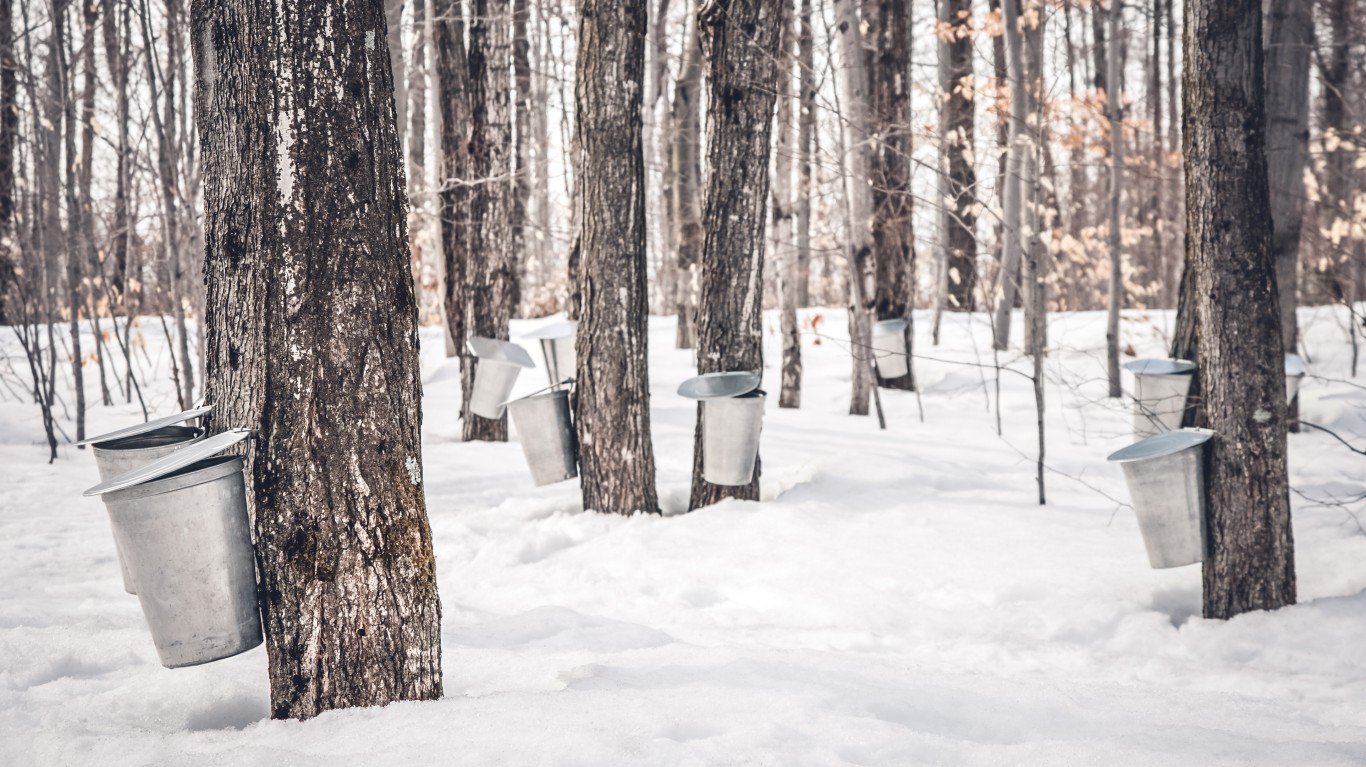
Maple syrup
> Largest U.S. producer: Vermont
> Largest international producer: Canada
Maple syrup production relies on specific temperature patterns during the winter and spring. Warmer winters can affect sap flow in maple trees, and also the timing and duration of the flow. That means shorter or less predictable sugaring seasons. The making of maple syrup is deeply rooted in the cultural heritage of many regions, particularly in North America, and climate change-induced challenges to its production can impact the cultural traditions, livelihoods, and local economies tied to the maple syrup industry.
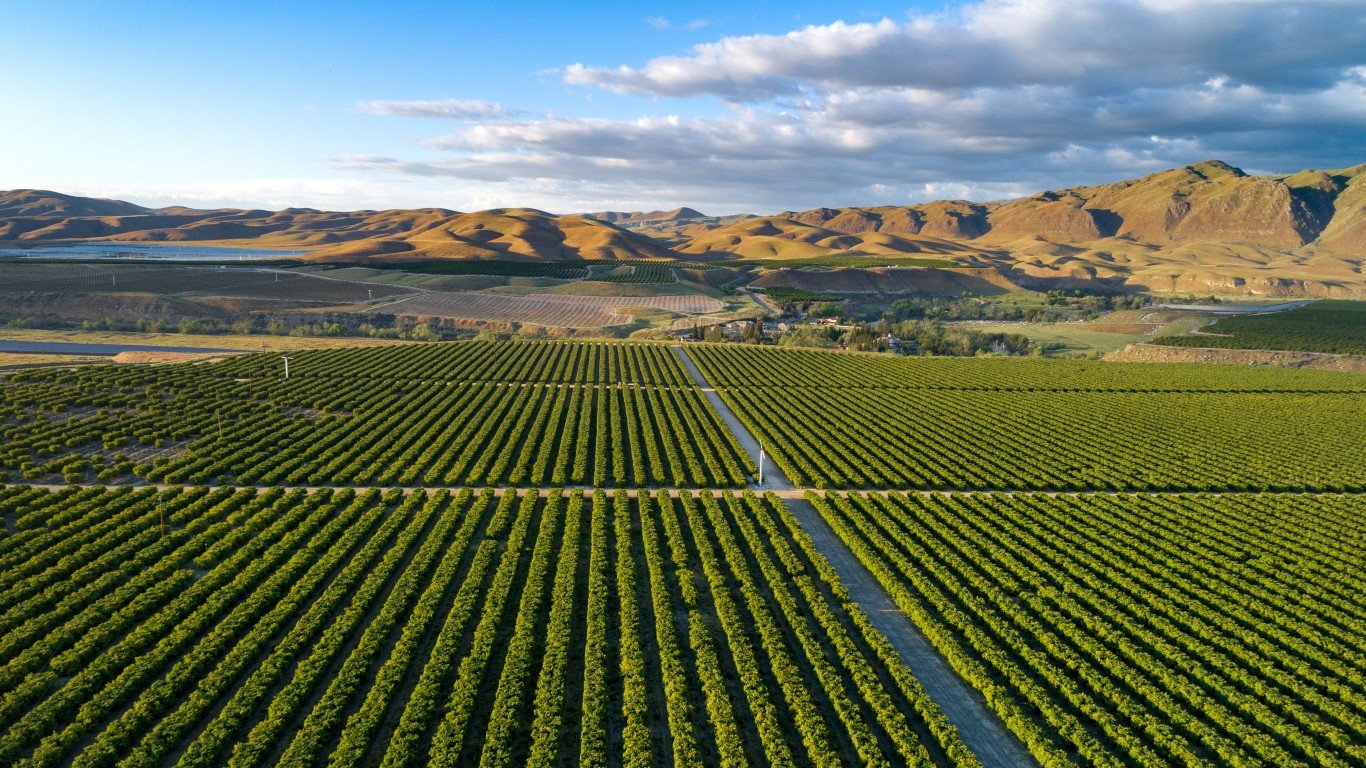
Olives
> Largest U.S. producer: California
> Largest international producer: Spain
Warmer temperatures can disrupt the flowering process in olive trees, reducing fruit set and impacting the development and quality of the olives. Long dry spells followed by heavy rainfall can lead to soil erosion, root stress, and reduced water infiltration, affecting olive tree health and productivity. Warmer temperatures can increase the population growth of certain pests, such as olive fruit fly and olive scale insects, while changes in temperature and humidity can also impact the incidence and severity of fungal diseases, including olive knot and Verticillium wilt. High temperatures during the fruit ripening period can also affect oil quality by reducing the accumulation of desirable compounds, including fatty acids, antioxidants, and other bioactive compounds.
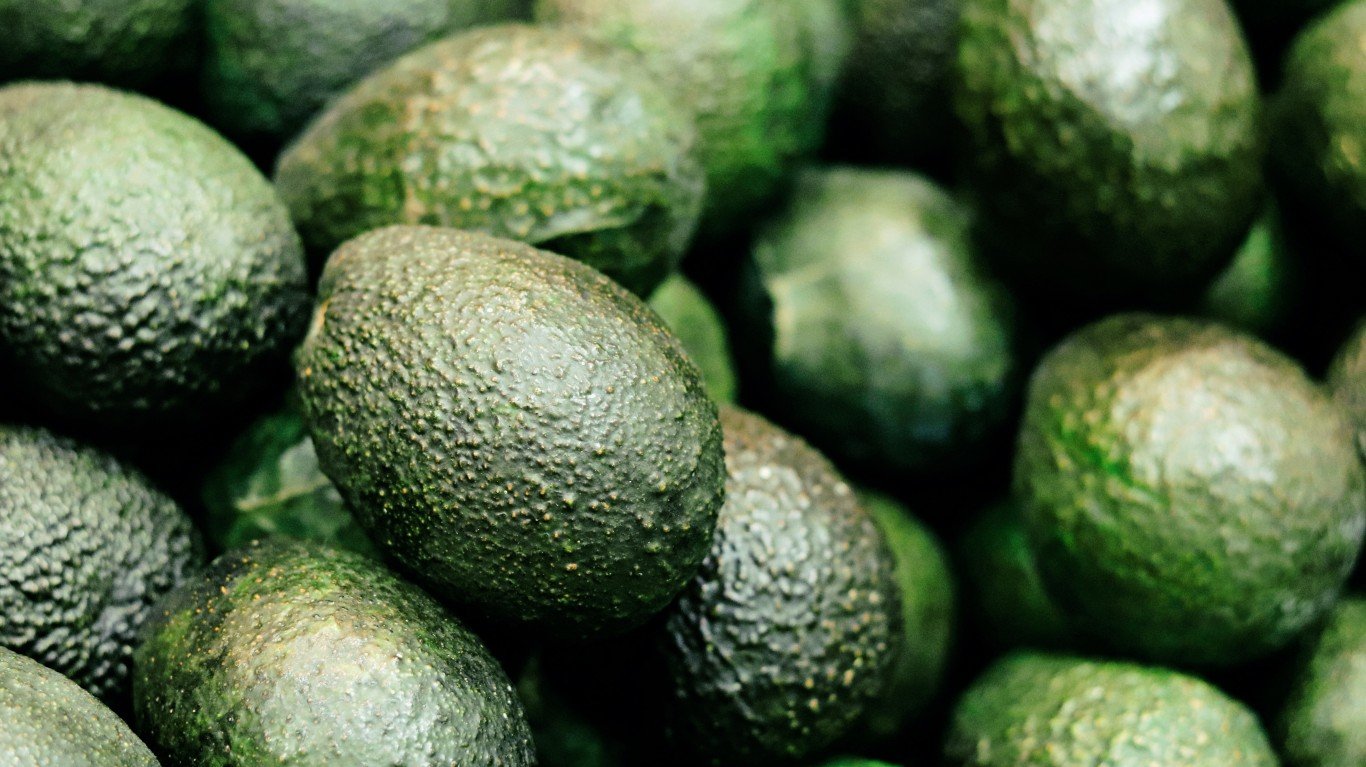
Avocados
> Largest U.S. producer: California
> Largest international producer: Mexico
Avocados thrive in specific temperature ranges, and higher temperatures can affect fruit set, reduce yields, and impact the quality of the fruit. Drought stress can also affect tree health, leading to leaf drop and reduced productivity. Irregular rainfall patterns can lead to soil erosion, nutrient leaching, and reduced water infiltration, and such extreme weather events as storms and floods can physically damage orchards. Warmer temperatures can favor the proliferation of certain pests, such as mites, scale insects, and borers, and changes in rainfall patterns can impact the occurrence and severity of fungal diseases, including root rot and anthracnose.
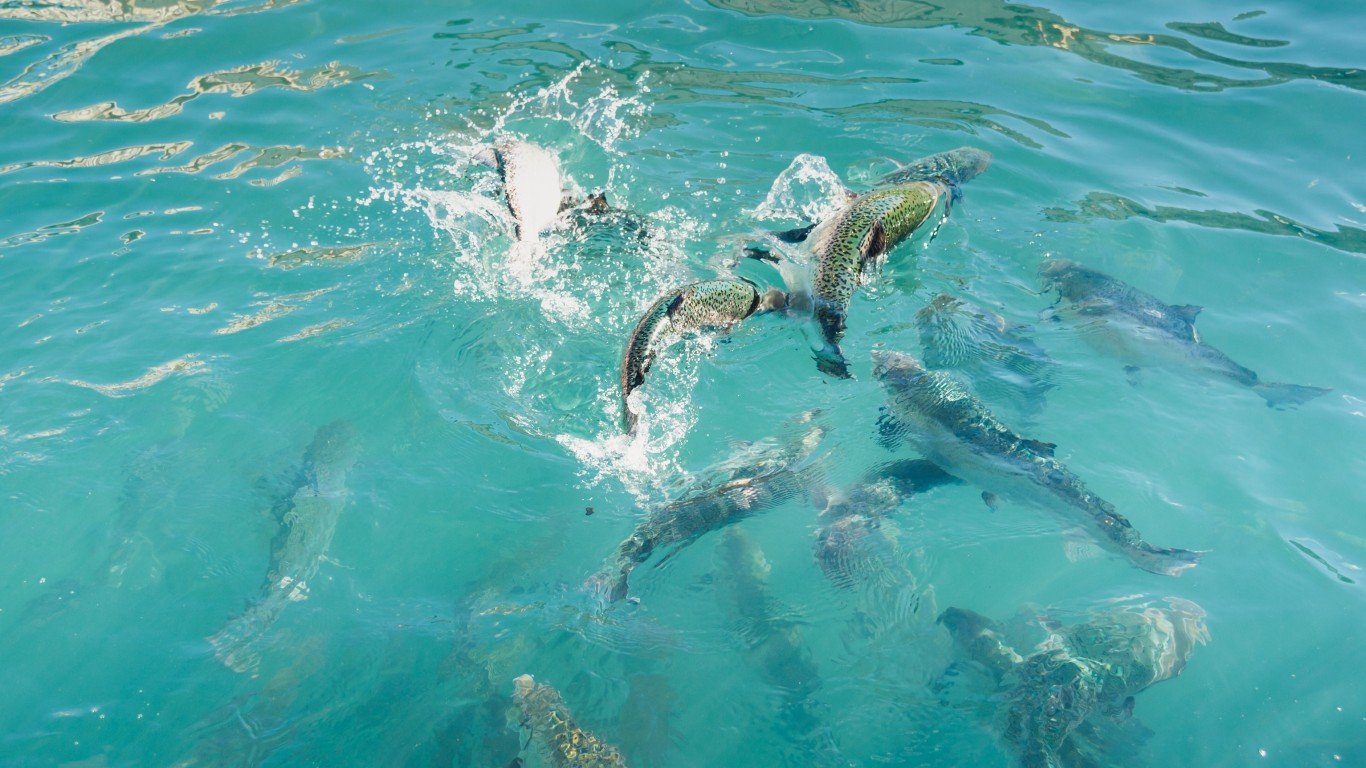
Salmon
> Largest U.S. producer: Alaska
> Largest international producer: Norway
Salmon are cold-water species, and changes in water temperature associated with climate change can have significant effects on their survival and reproduction through stress, reduced growth, and increased vulnerability to diseases. Changes in water quality, including oxygen levels and pH, can also impact the fish’s health and survival. These changes can lead to altered river flows, affecting the migration of salmon to and from their spawning grounds. Rising carbon dioxide levels in the atmosphere lead to ocean acidification, which can negatively affect salmon during their marine life stage, as acidic waters can impact the availability of prey, disrupt the growth and development of juvenile salmon, and make them more susceptible to predation and disease.

Beef
> Largest U.S. producer: Texas
> Largest international producer: U.S.A.
Climate change can alter the availability and quality of forage resources for beef cattle, leading to challenges in meeting the nutritional needs of cattle, potentially impacting their growth, reproduction, and overall productivity. Changes in precipitation patterns can affect water quality and increase the risk of waterborne diseases, as well as influencing the distribution, prevalence, and life cycles of diseases and parasites that affect the animals. Ironically, beef cattle are not just potential victims of climate change but also significant contributors to it: They release large quantities of methane – a potent greenhouse gas produced during their digestive process, particularly through enteric fermentation in the romance – into the atmosphere.
